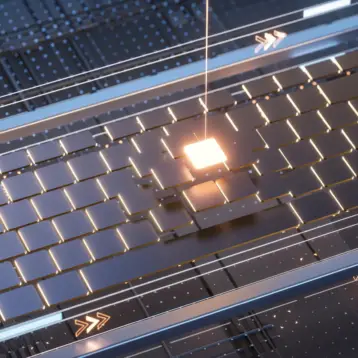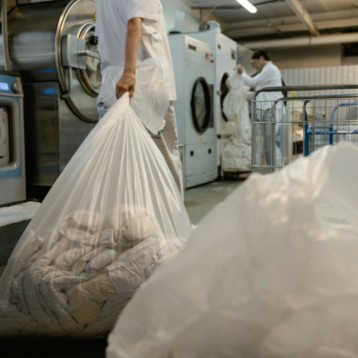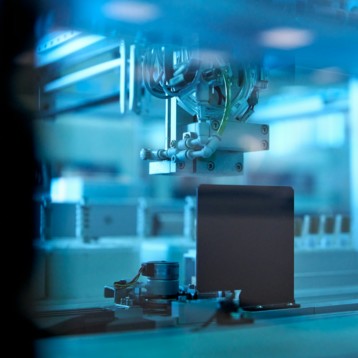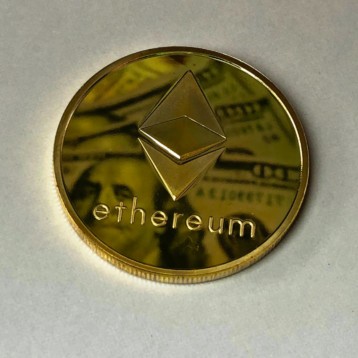The dream of the paperless office
|
One of the earliest articles discussing the topic of the paperless office was “the Office of the Future” published in the June 1975 issue of Business Week. The idea, bandied about many times since, was the elimination of most or all paper which has been piling around in our offices in the last several decades.
The personal computer revolution of the 1980s brought with it the hope of the paperless office as there was a shift from the old-fashioned typewriters to viewing and editing documents on computer screens. But this dream vanished quickly as people realized that their monochromatic cathode ray tube (CRT) displays were uncomfortable to watch for long periods of time. Aggravating the problem was the introduction of the low-cost office printer, capable of making dozens of copies of each document (an ability which was limited until that time to large and expensive photocopying machines).
|
As years passed by it seemed that the introduction of the personal computer not only did not reduce the amount of paper produced in our offices, it actually increased it.
The widespread adoption of liquid crystal display (LCD) technology in recent years made some people hopeful again for at least some reduction in office paper production, but although LCD might be somewhat more comfortable to watch than the older CRT screens, most people still find it difficult to read long documents on the computer screen; and in most cases anything above one or two pages will get printed at least once.
The old/new hope of electronic paper
|
In the 1970s, Xerox’s Palo Alto Research Center (PARC) was a powerhouse of innovation. Many aspects of what we now see as the modern computer, namely the mouse, the laser printer, the Ethernet, GUI, computer-generated color graphics, as well as a number of important computer languages, were invented at PARC around that time. The development of the Gyricon, which was nearly lost among all those important breakthroughs, was originally invented in 1974 by PARC employee Nicholas K. Sheridon as a new display technology for the company ALTO personal computer. Eventually, the Gyricon (a Greek term meaning rotating image) turned out to be the basis for modern e-paper technology.
|
Electronic paper (e-paper) is the name given to several distinctly different technologies (to be covered in depth by a forthcoming TFOT article) which are capable of displaying text, images and in the case of some e-paper technologies, video, on a thin (occasionally flexible) sheet of plastic. In many respects e-paper is more similar to a digital display than to paper. E-paper displays can change the image at a press of a button, store countless articles or books and can even be made interactive allowing a user to add content, search and perform other operations. The important advantage of e-paper over conventional screen technology is its readability. Unlike conventional screen technology, e-paper doesn’t emit light on its own; rather, it uses the ambient light to reflect the text just like ordinary paper. E-paper has the potential to eliminate paper usage in future offices but it remains to be seen whether it will be successful where so many previous technologies have failed.
Commercial e-paper technology is finally starting to appear on the market but it will take several more years before it will start making its impact. In the meantime Xerox has been hard at work trying to develop different technology which might help reduce the amount of paper used in modern offices.
Xerox Inkless printer
|
In 2003, after a period an extensive market research, Xerox Research Centre of Canada (XRCC) began work on a new type of paper, one which can be written on and erased simply by applying light of a certain wavelength to it. The idea behind the development of this technology is the possibility to create paper that can hold information for a short period of time and can easily be reused time and time again.
The erasable paper developed by the Xerox team is still in relatively early stages of development. So far the team was able to write and re-write about 50 times on each sheet of paper using a modified multifunction printer. The printer includes a special ultra-violet (U.V.) light source which is used to write on the special paper. No ink of any kind is used in the process and the resulting printed pages do not smudge or smear when touched. The pages do degrade over time and currently can last between 16-24 hours before returning to their original blank form. The Xerox team is now looking for ways to better control this degradation process. If a new way will be found to impede the process altogether, while still maintaining the ability to manually erase the paper, Xerox can truly claim to have revolutionized printing.
|
At this stage of development, there are still many unknowns regarding the new technology. Besides the degradation issue, it is still too early to determine the price of the technology—one of the most important factors in determining its eventual success. If the Xerox team is able to keep the price of the new erasable paper and adapted printer just slightly above the level of conventional printers and paper, the savings on ink alone will make the transition to the new technology worthwhile. Another issue is the monochromatic nature of the technology. Since the Xerox team is currently focusing on creating a reusable substitute for draft paper, color is not a considered a main goal. However, since the technology has the ability to go beyond the current 150 dpi printing quality, it might actually have the potential not only to complement existing laser technology, but also to replace at least some types of existing printers in the more distant future.
|
So how does the new erasable paper technology work? Xerox is reluctant to disclose the exact details, but we acquired basic insight into the technology. The paper developed by Xerox apparently includes photochromic compounds (such as spiropyran) which exhibit heliochromic properties. That is, they darken when exposed to U.V. radiation and fade in the absence of U.V. light. Photochromic compounds are used in the manufacturing of certain sunglasses due to their ability to darken and regain their transparency quickly. However, a distinct difference from sunglasses is that Xerox’s erasable paper can remain darkened for many hours. The U.V. light source, called a light bar, is integrated into a printer which illuminates specific parts of the erasable paper, creating the desired text or image on the paper. The printer can also erase the paper using a different wavelength—making the paper reusable.
Xerox Interview
To learn more about Xerox’s inkless printer technology, TFOT interviewed Dr. Paul Smith, laboratory manager at the Xerox Research Centre of Canada.
Q: When did you start working on the erasable paper technology and what was the motivation for the project?
A: We began work on erasable paper about three years ago. This followed extensive research by our work practices team from PARC who spent time with customers in offices. People still like the feel and look of paper—it is one of the best ways to communicate and show information. But our customers told us they would like to use a little less paper, so we began working on ways to create paper documents that could be reused.
Q: Did you have a Eureka! moment during the development?
A: The Eureka moment really came during the discussions with customers when we determined that two of every five documents are only used for as little as a day or even for less than a minute. Individuals might print their calendar or memos for a meeting or even the header sheet that goes with networked printers that tells who the document belongs to. You use that literally for only a minute and then put it in the recycle box.
Q: How does the erasable paper work? Could it be used to print in color?
|
A: The erasable paper is not really printed. The paper is coated with a coating of only a few microns. This overlay contains chemicals that are activated by a light bar in the printer or multifunction device that creates the image. At this time the image is black or a dark purple color. It is conceivable that color could be created, but we are not working in that area now.
Although on the surface it may appear simple to develop a paper that can be imaged using UV light alone and then fades at a specified rate at room temperature, in practice there are many complex elements which must come together to make this a viable technology. Erasable paper technology is based on a photochromic concept similar to transition sunglasses which turn dark in bright sunlight and are seen through in a dark room. In the case of sunglasses the photochromic molecule, normally from a class of molecules such as spiropyran, reversibly converts from a colorless form to a colored form. In the case of the erasable paper, the compound that is present within the paper also turns from a colorless form to colored when exposed to a specific wavelength of light. The compound then gradually reverts back to its original colorless form over a period of time.
The end result is a reusable paper which feels very much like regular paper and is not at all like the older, waxy fax paper. The reusable paper technology has been developed from scratch but does incorporate elements which have been disclosed before. With respect to the light source, it is just beyond the blue end of the visible light spectrum. The intensity required is directly related to the writing speed that one would like to support.
Q: Can we describe what you have developed as an inkless printer?
A: People normally associate printing with inks and toners which are deposited onto the paper to make the image. This in fact is an inkless printer. The media itself creates the image after exposure to light.
Q: How many write-rewrite cycles did you perform with each paper?
Q: What printing resolution did you achieve?
A: We currently use 150 dpi, but this is not a limitation, this is just due to the resolution of the image bar that we use. This resolution is more than adequate considering the documents that are being considered for use with transient documents such as cover sheets and e-mails. We could have a much higher resolution if required.
Q: Since the paper is sensitive to U.V. radiation, what happens if you leave paper near the window or even outside on a sunny day?
A: This paper responds to a specific wavelength of light and requires a certain intensity level to change color. The intensity required is higher than the intensity observed in sunlight.
|
Q: Many other technologies developed in the past by Xerox failed to materialize and were later introduced by other companies. Do you fear a similar fate for the erasable paper?
A: It is sort of a Silicon Valley myth that Xerox has not been successful in bringing technology products to market, yet we are a $15.7 billion company based on technology that we created ourselves. Our researchers invented the Ethernet, the first laser printer, the first plain-paper fax machine and the graphic user interface. There have been more than 40 successful spin-outs and startups based on Xerox technology. We are confident, based on our extensive focus groups, that there is customer interest in this project and that we will be able to develop a successful product.
Q: Can the erasable paper be used for security purposes?
A: There are many potential applications and a large amount of interest for this technology. Xerox is currently considering all potential commercialization avenues.
Q: When do you predict the erasable paper to reach the consumer market, and what obstacles do you still face in its development?
A: This is a very early research project that is several years away from reaching the market. We will be looking at a number of elements related to quality of image, length of time for the image to fade and more. There is a great deal more work to be done before this will be a product.
Q: How much do you predict the erasable paper will cost when launched?
A: Because erasable paper is still in the research centers, there is no way to speculate on what the cost of the paper will be. However, I want to clarify that this may not require a stand-alone special printer. In our prototypes, we use it as an added feature in existing Xerox multifunction devices. The erasable paper would be in one of the three or four paper drawers that these devices typically offer.
Q: What are the current limitations of the erasable paper technology? Will you be able to control the time it takes for the text to disappear?
A: Currently the image fades in about 16 to 24 hours. We do expect further research will be able to control how long the image lasts. You can also immediately erase the paper and use it again by applying a heat source or putting the paper right in the machine to be reprinted.
Q: Do you fear people will mix regular paper and erasable paper and print important documents on erasable paper? Will it be possible to allow future printers to recognize the type of paper as erasable or regular and notify the user accordingly?
A: The way Xerox multifunction devices are set up, you can currently select what type of paper you wish to use, based on sizes, color, transparencies, and so forth that are loaded into the drawers. So it will certainly be an option that you will be able to tell the printing device when to use erasable paper.


















